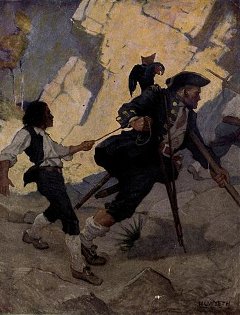
Several years after publishing Treasure Island, Robert Louis Stevenson was abashed to discover that he had drawn much of the story from Washington Irving’s 1824 book Tales of a Traveller, which he had read many years earlier and forgotten.
“I believe plagiarism was rarely carried farther,” he wrote later. “The book flew up and struck me: Billy Bones, his chest, the company in the parlour, the whole inner spirit, and a good deal of the material detail of my first chapters — all were there, all were the property of Washington Irving. But I had no guess of it then as I sat writing by the fireside, in what seemed the spring-tides of a somewhat pedestrian inspiration; nor yet day by day, after lunch, as I read aloud my morning’s work to the family.”
This is an instance of cryptomnesia, the mistaking of a forgotten memory for an original idea. Stevenson charged himself with plagiarism, but he had honestly believed he was writing a new story: “It seemed to me original as sin; it seemed to belong to me like my right eye.” In reading Nietzsche’s Thus Spake Zarathustra, Carl Jung was surprised to discover “almost word for word” an incident reported in a ship’s log in 1686. Jung recognized the passage from a book published around 1835, about 50 years before Nietzsche was writing. He contacted the philosopher’s sister, who confirmed that the two of them had read the book when Nietzsche was 11 years old.
“I think, from the context, it is inconceivable that Nietzsche had any idea that he was plagiarizing this story,” Jung wrote. “I believe that fifty years later it had unexpectedly slipped into focus in his conscious mind.”
